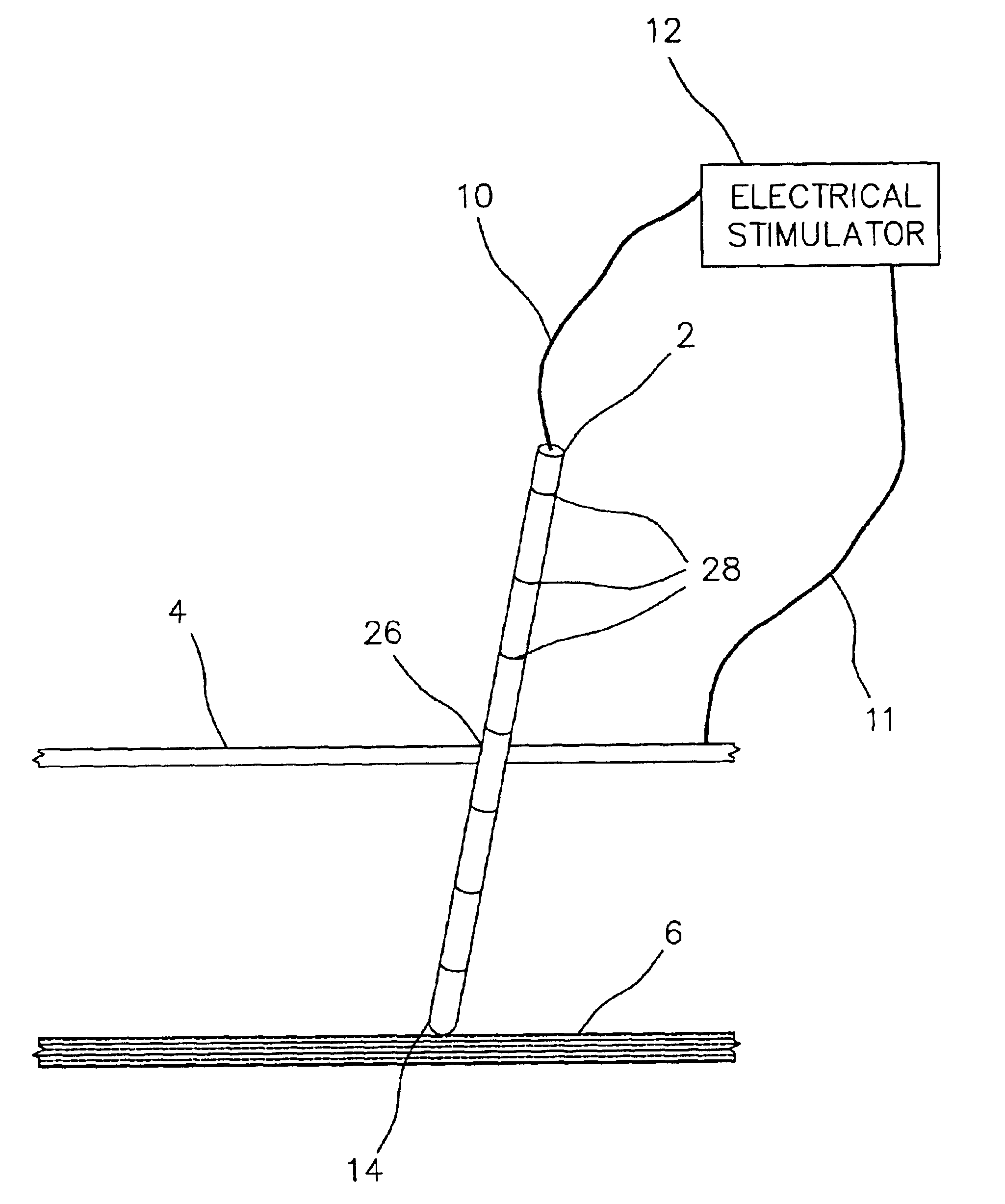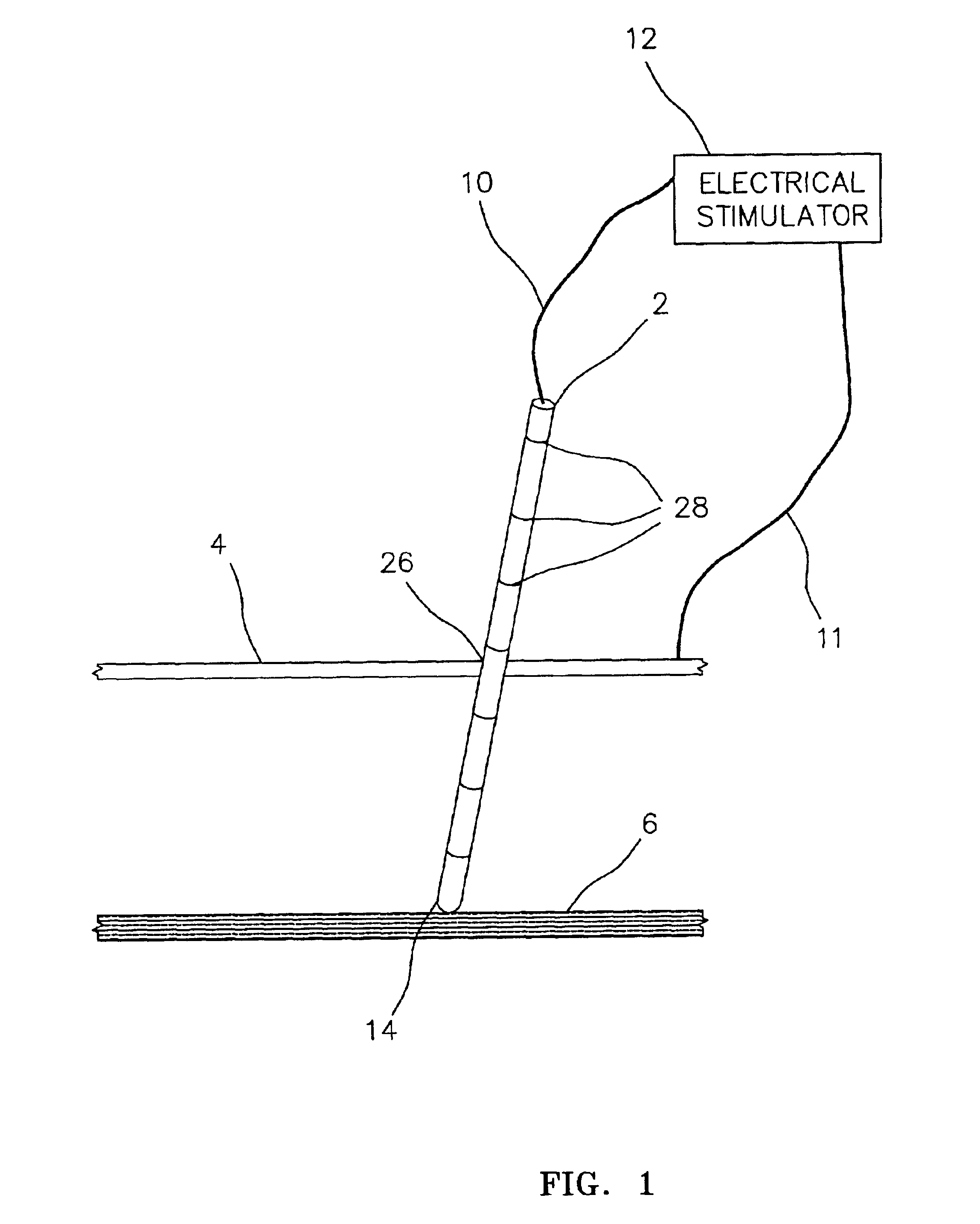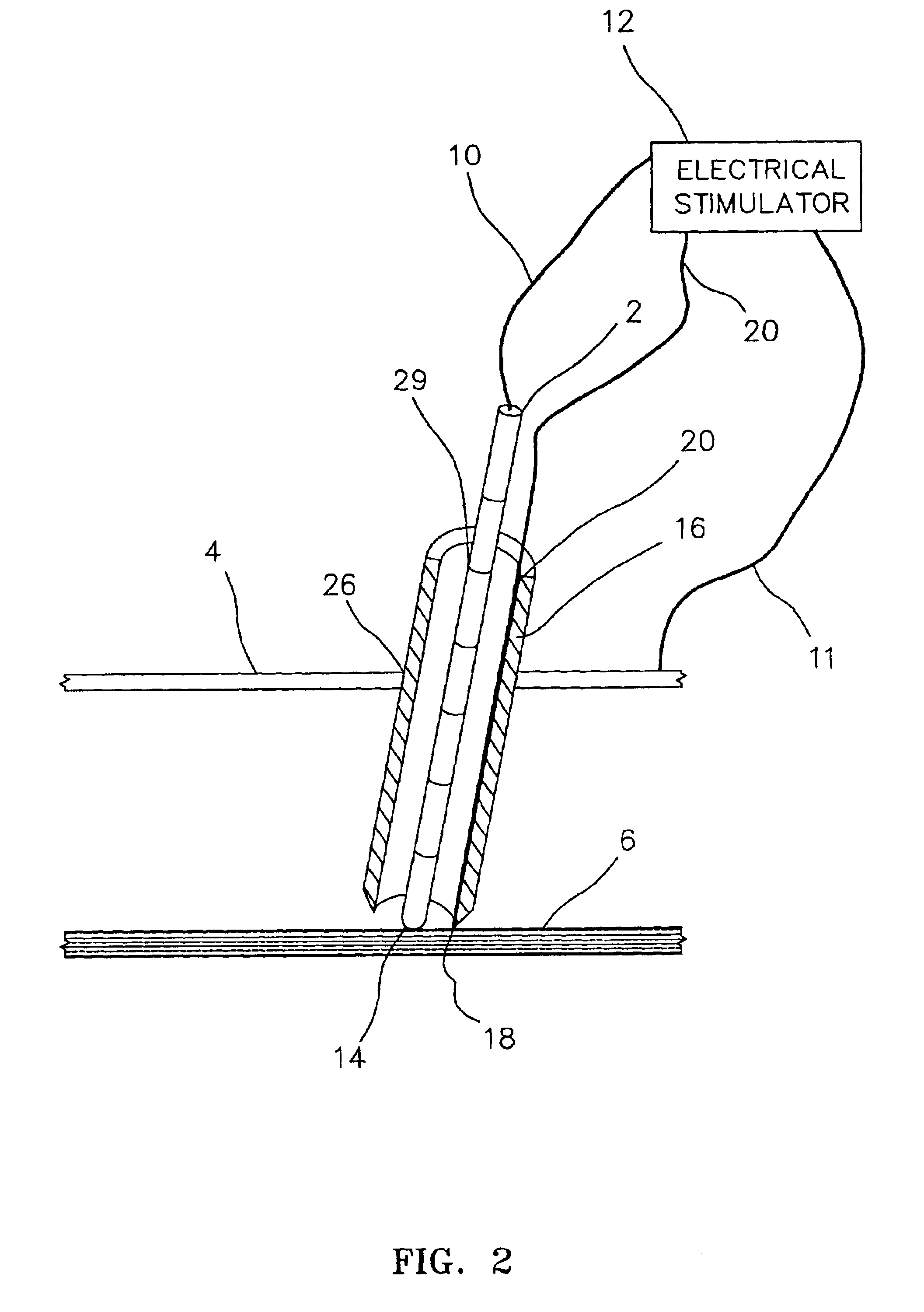Electrically sensing and stimulating system for placement of a nerve stimulator or sensor
a nerve stimulator and sensing technology, applied in the field of electric sensing and stimulating system for placement of nerve stimulators or sensors, can solve the problems of increasing power requirements, imposing risk, discomfort and potential tissue damage on patients, and no way to detect the movement of cannulas, so as to facilitate the placement of microstimulators in living tissu
- Summary
- Abstract
- Description
- Claims
- Application Information
AI Technical Summary
Benefits of technology
Problems solved by technology
Method used
Image
Examples
Embodiment Construction
Microstimulator Implantation Procedure, Anterior Approach, for Sleep Apnea
1. Instruct the patient to lie down in the supine position.
2. Prepare the patient for surgery using standard surgical preparation.
3. Anesthetize the skin and subcutaneous tissue with 1% xylocaine / 1:100,000 epinephrine at and around the insertion site in the neck.
4. Anesthetize one nostril and the nasopharynx with topical lidocaine / oxymetazoline solution and insert a laryngoscope to observe tongue movement during hypoglossal nerve stimulation.
5. Mark the midpoint of the hyoid bone and mark a point about 1 cm anterior / superior to the hyoid with a sterile pen. Make an incision about 1 cm wide parallel to the hyoid extending down into the subcutaneous tissue about 5 mm mid center over the 1 cm anterior point. Use an intravenous sedative as required.
6. Attach the electrical stimulator cathodal connecting lead to the proximal end of the blunt tipped electrode probe. The electrical stimulator anode lead is attached t...
PUM
 Login to View More
Login to View More Abstract
Description
Claims
Application Information
 Login to View More
Login to View More - R&D
- Intellectual Property
- Life Sciences
- Materials
- Tech Scout
- Unparalleled Data Quality
- Higher Quality Content
- 60% Fewer Hallucinations
Browse by: Latest US Patents, China's latest patents, Technical Efficacy Thesaurus, Application Domain, Technology Topic, Popular Technical Reports.
© 2025 PatSnap. All rights reserved.Legal|Privacy policy|Modern Slavery Act Transparency Statement|Sitemap|About US| Contact US: help@patsnap.com



